Moniek Bloks's Blog, page 120
March 31, 2022
All Hail Queen Charlotte! Meet the cast of Netflix’s new limited series
Netflix and Shondaland are teaming up for this Bridgerton spin-off prequel which focuses on the rise and love life of a young Queen Charlotte. You’ll also see the Bridgerton characters Violet Bridgerton and Lady Danbury. This prequel will tell the story of Charlotte’s marriage to King George III was the beginning of a great love story and a societal shift, leading to the world of Bridgerton as we know it.
 Queen Charlotte. Cr. Liam Daniel/Netflix © 2022
Queen Charlotte. Cr. Liam Daniel/Netflix © 2022 Queen Charlotte. (L to R) Golda Rosheuvel as Queen Charlotte, India Ria Amarteifio as Young Queen Charlotte from Queen Charlotte. Cr. Liam Daniel/Netflix © 2022
Queen Charlotte. (L to R) Golda Rosheuvel as Queen Charlotte, India Ria Amarteifio as Young Queen Charlotte from Queen Charlotte. Cr. Liam Daniel/Netflix © 2022India Amarteifio plays a young Queen Charlotte. Michelle Fairley plays Princess Augusta, the King’s mother, while Corey Mylchreest plays the young King George. Golda Rosheuvel reprises her role as the older Charlotte. The new series is still untitled. Read more about the real Queen Charlotte here.
The post All Hail Queen Charlotte! Meet the cast of Netflix’s new limited series appeared first on History of Royal Women.
March 29, 2022
Yan Ji – The Machiavellian Empress
Empress Dowager Yan has been known as one of the most devious Empresses in China’s history. She has often been described as a ruthless woman who tried to prevent her stepson, Liu Bao, from taking his rightful place as Emperor. Yet, Empress Dowager Yan has shown her potential to be a capable regent during her short regency. She was a patron of Buddhism and tried to promote the religion in court. Yet, history is written by the victors, and since Empress Dowager Yan ultimately lost the battle for power, she has been known in history for her nepotism.
Empress Dowager Yan was born sometime around 101 C.E. Her original name was Yan Ji. Yan Ji’s great aunts were concubines to Emperor Ming.[1] Her grandfather, Yan Zhang, was an officer in charge of the imperial army under Emperor Ming.[2] Her father was Yan Chang, and he did not have a public career until Yan Ji entered the palace.[3] Even though the Yan clan had a few connections to the throne, they were not a prominent family.[4] Yan Ji was well educated.[5] She was known to be very intelligent and beautiful.[6]
In 114 C.E., Yan Ji became a concubine to Emperor An. Emperor An was immediately attracted to her.[7] He made her father his advisor.[8] A year later in 115, C.E., Yan Ji was appointed Empress. It was said that she dominated Emperor An’s affections and appointed her relatives for court positions.[9] Her father was given the title of Marquis of North Yishun and supervised the imperial army.[10]
It was also believed that Empress Yan eliminated her rivals.[11] One of those rivals was Honored Lady Li, who gave birth to the Emperor’s only son Liu Bao.[12] Shortly after Lady Li gave birth, the Empress poisoned her.[13] Liu Bao was then placed in the care of two wet nurses.[14] Empress Dowager Deng was very fond of him.[15] Emperor An had no more children, and Liu Bao became the Crown Prince.[16]
After Empress Dowager Deng died and the Deng clan was extinguished, Empress Yan kept promoting her family.[17] Her family now controlled all the influential positions at court.[18] Thus, Empress Yan was secure in her position as Empress. However, she wanted to depose Liu Bao as Crown Prince.[19] She told the emperor falsehoods about Liu Bao.[20] Emperor An believed it and demoted his son as Prince Jinyin.[21]
In 125 C.E., Emperor An died of a disease in Yie county while touring the Han empire with his Empress.[22] Empress Yan did not want Liu Bao to become Emperor. She kept Emperor An’s death a secret and made her way to the palace.[23] She promoted herself as Empress Dowager and declared herself regent.[24] To consolidate her power, she controlled the army by promoting her brother Yan Xian as general of the imperial army.[25] In order to hold on to her power, she needed to install a puppet Emperor.[26] She selected Emperor An’s cousin, Liu Yi, to be the next Emperor.[27] He was five years old, and she found him to be easy to control.[28] Thus, Liu Yi ascended the throne as Emperor Shao. Under her regency, Empress Dowager Yan eliminated anyone who opposed her rule. One of these was General Geng Bao, who was Emperor An’s maternal uncle.[29] He was demoted and forced to commit suicide.[30] She continued to promote her family members.
In 125 C.E., Emperor Shao fell ill. This put Empress Dowager Yan in an insecure position. She quickly sought an Emperor who was young enough to control.[31] Yet, Emperor Shao died before Empress Dowager Yan could find a suitable candidate.[32] Immediately after the Emperor’s death, there was a coup d’état led by Wang Kang and Sun Chen against her.[33] They murdered the Empress’s supporters and installed Liu Bao as Emperor.[34] He ascended the throne as Emperor Shun. Empress Dowager Yan tried to fight back by sending General Feng Shi to attack the rebels.[35] However, General Feng Shi betrayed her by declaring his loyalty to Emperor Shun.[36] Emperor Shun’s army ultimately defeated Empress Dowager Yan when they achieved victories over her brothers’ armies.[37] Empress Dowager Yan’s brothers were arrested and executed.[38] Empress Dowager Yan was arrested and sent to a secondary palace.[39] The rest of the Yan family were exiled to modern-day Southern Vietnam.[40] Empress Dowager Yan died in 126 C.E. Many historians believe that she was murdered.[41] She was buried beside Emperor An in Luoyang.[42] Thus, all of Empress Dowager Yan’s schemes and ambitions brought about her ultimate downfall.
Sources:
Fanzhong, Y. (2015). Notable Women of China: Shang Dynasty to the Early Twentieth Century. (B. B. Peterson, Ed., Z. Jing, Trans.). London: Routledge.
De Crespigny, R. (2016). Fire over Luoyang: A History of the Later Han Dynasty 23-30 A.D. Boston: Brill.
[1] De Crespigny, p. 207
[2] Fanzhong, p. 117
[3] De Crespigny, p. 207
[4] De Crespigny, p. 207
[5] Fanzhong, p. 117
[6] Fanzhong, p. 117
[7] De Crespigny, p. 209
[8] Fanzhong, p. 117
[9] Fanzhong, p. 118
[10] De Crespigny, p. 207; Fanzhong, p. 118
[11] De Crespigny, p. 207; Fanzhong, p. 118
[12] De Crespigny, p. 207
[13] De Crespigny, p. 207
[14] De Crespigny, p. 207
[15] De Crespigny, p. 207
[16] De Crespigny, p. 207
[17] De Crespigny, p. 210
[18] Fanzhong, p. 118
[19] Fanzhong, p. 118
[20] Fanzhong, p. 118
[21] Fanzhong, p. 118
[22] Fanzhong, p. 118
[23] De Crespigny, p. 218; Fanzhong, p. 118
[24] Fanzhong, p. 118
[25] Fanzhong, pp. 118-119
[26] Fanzhong, p. 119
[27] De Crespigny, p. 218
[28] De Crespigny, p. 218
[29] De Crespigny, p. 210; Fanzhong, p. 119
[30] Fanzhong, p. 119
[31] Fanzhong, pp. 119-120
[32] Fanzhong, pp. 119-120
[33] Fanzhong, p. 120
[34]De Crespigny, p. 490; Fanzhong, p. 120
[35] Fanzhong, p. 120
[36] Fanzhong, p. 120
[37] Fanzhong, p. 120
[38] De Crespigny, p. 490
[39] Fanzhong, p. 120
[40] Fanzhong, p. 120
[41] Fanzhong, p. 120
[42] Fanzhong, p. 120
The post Yan Ji – The Machiavellian Empress appeared first on History of Royal Women.
March 27, 2022
A Baden burial place – Schlosskirche St. Michael Pforzheim
The Schlosskirche St. Michael Pforzheim in Germany seems like an unassuming place to have so many royal figures buried there. Though its exact building history is unclear, it dates from around the 13th century. It was heavily damaged during the air raid on Pforzheim in February 1945 but was restored before 1957.
From 1535 the church became the burial place for the Margraves and later Grand Dukes of Baden, with the last burial being that of Stéphanie de Beauharnais. Stéphanie’s father’s first cousin was Alexandre de Beauharnais, who in turn was the first husband of Empress Joséphine, wife of Napoleon Bonaparte. Stéphanie became a Princesse Française and she made a dynastic alliance with Charles, the future Grand Duke of Baden.
While some of the tombs can be seen (albeit from a distance due to COVID-19 measures), Stéphanie lies buried in the southern crypt, which is not open to the public. The southern crypt is on the right side of the choir, while the northern crypt lies on the left side of the choir.
 Photo by Moniek Bloks
Photo by Moniek BloksThe church itself has many magnificent (funeral) monuments on the sides though many appeared to be unmarked.
Click to view slideshow.The choir seemed to house the more significant graves but unfortunately, the area could not be accessed due to COVID-19 measures. These photos were taken from behind a glass panel.
Click to view slideshow.Besides Stéphanie de Beauharnais, other female royal burials include Kunigunde of Brandenburg-Kulmbach, Countess Palatine Anna of Veldenz, Anna Marie of Baden-Durlach (daughter of Anna who died at the age of 8), Maria Cleopha of Baden-Durlach, Barbara of Württemberg (first wife of Margrave Frederick V), Eleonore of Solms-Laubach (second wife of Frederick V), Maria Elisabeth of Waldeck-Eisenberg (third wife of Frederick V), Anna Maria von Hohen-Geroldseck (fourth wife of Frederick V), Caroline Louise of Hesse-Darmstadt and Amalia of Nassau-Dietz.
This church is truly a magnificent piece of history and it would have been lovely to see them place more emphasis on the royal burials here.
The post A Baden burial place – Schlosskirche St. Michael Pforzheim appeared first on History of Royal Women.
March 24, 2022
Book Review: Maria of Austria, Holy Roman Empress (1528-1603) by Rubén González Cuerva
Maria of Austria was born on 21 June 1528 as the second child and eldest daughter of Charles V, Holy Roman Emperor and Isabella of Portugal. Of her seven siblings, only her elder brother Philip (the future King Philip II of Spain) and her younger sister Joanna (born in 1535) survived to adulthood. Through her marriage to her first cousin Maximilian, she eventually became Holy Roman Empress and the mother of 16 children, of whom seven survived to adulthood. Several years after her husband’s death, she returned to Spain with her youngest daughter, where she received special permission to live in the Convent of Las Descalzas Reales without becoming a nun.
Maria of Austria, Holy Roman Empress (1528-1603) by Rubén González Cuerva is the first English-language biography about Maria, and the different chapters cover the different roles she played during her lifetime. Despite its scholarly providence, I found it easy to read and quite suitable for the average reader. Maria was quite an interesting figure, and I was especially surprised at how she spent her last years with her daughter in the convent. For the late medieval woman, she had certainly fulfilled all the roles expected of her, though she still kept her own voice throughout.
Maria of Austria, Holy Roman Empress (1528-1603) by Rubén González Cuerva is a beautiful read, and if I had to say something I did not like, it would be the choice of image cover for this book – it does not entice me to want to read this book.
Maria of Austria, Holy Roman Empress (1528-1603) by Rubén González Cuerva is available now in the UK and the US.
The post Book Review: Maria of Austria, Holy Roman Empress (1528-1603) by Rubén González Cuerva appeared first on History of Royal Women.
March 23, 2022
The Year of Empress Elisabeth – Sisi & her sister-in-law Maria Annunciata of Bourbon-Two Sicilies
Maria Annunciata of Bourbon-Two Sicilies was born on 24 March 1843 as the daughter of King Ferdinand II of the Two Sicilies and his second wife Maria Theresa of Austria, a granddaughter of Leopold II, Holy Roman Emperor and Maria Luisa of Spain. She was known in the family as Ciolla. From her father’s first marriage to Maria Cristina of Savoy, she had one elder half-brother, the future King Francis II of the Two Sicilies. Her father’s second marriage to her mother produced a total of 12 children, though not all of Maria Annunciata’s siblings lived to adulthood.
Her mother preferred to remain at home to take care of the children, and Maria Annunciata shared her mother’s calm and modest lifestyle. Her father died on 22 May 1859, and he was succeeded by her eldest brother Francis. Not much later, the Kingdom was invaded, and the family was forced to flee, first to Gaeta and then to Rome. The Kingdom of the Two Sicilies came to an end on 20 March 1861, and it was absorbed into the Kingdom of Italy.
Maria Annunciata’s brother Prince Louis, Count of Trani, married Empress Elisabeth’s sister Mathilde Ludovika in 1861 while her elder half-brother King Francis II of the Two Sicilies had married also married another one of Empress Elisabeth’s sisters – Marie Sophie – in 1859. While the family was in Rome, Maria Annunciata’s marriage to Karl Ludwig of Austria, a younger brother of Emperor Franz Joseph I of Austria, was negotiated. He had been married once before to Princess Margaretha of Saxony, but she had died of typhoid in 1858 at the age of 18, after almost two years of marriage. According to a letter by Franz Joseph to his mother, Karl Ludwig was “very in love and happy.”1 Their proxy wedding eventually took place on 16 October 1862 in Rome. After the proxy wedding, Maria Annunciata travelled to Venice, where the second wedding ceremony would take place. Karl Ludwig and Maria Annunciata were married in person on 22 October. A notable absentee at the wedding was her new sister-in-law, Empress Elisabeth, although another sister-in-law, Charlotte, was present. During the ceremony, Maria Annunciata had suddenly grabbed the hand of her new mother-in-law Archduchess Sophie and said, “Dear mother, I have swallowed something, I have swallowed something.”2 She suddenly threw her head back, and her eyes rolled back into her head before falling to the ground with a terrible scream – she suffered an epileptic seizure.
Sophie was shocked, as was Karl Ludwig, and Sophie later wrote, “The slowly broken happiness, the poor child unaware of all the misery she unconsciously brings upon us! Poor Karl!”3 Luckily, Maria Annunciata recovered from this wedding nightmare and the newlyweds first went to live in Görz before moving to Graz. The castle of Artstetten, owned by her father-in-law, was chosen as their country residence, though Maria Annunciata did not wish to live in the country. The young family would eventually spend the winters in Vienna, spring and autumn at their hunting lodge and the summers at Artstetten.
Despite her serious health problems, Maria Annunciata gave birth to four children in quick succession: Archduke Franz Ferdinand (born 1863), Archduke Otto (born 1865), Archduke Ferdinand Karl (born 1868) and Archduchess Margarete Sophie (born 1870). Empress Elisabeth was present for the baptism of Maria Annunciata’s second son Otto, as was the widowed Empress Caroline Augusta.
Within a year of their marriage, Maria Annunciata had been diagnosed with tuberculosis. As her illness became worse, Maria Annunciata was unable to be the mother she had wanted to be. She did not want to infect her children, and she forbade them to touch her, kiss her or even be around her. She lived in virtual isolation and grew steadily weaker.4
After much suffering, she finally died on 4 May 1871 at the age of just 28 in the arms of her husband. On 7 May, her body was carried in a litter to the Imperial Crypt, where she was laid to rest. Through her second son, she was the grandmother of Emperor Charles I of Austria, the last Emperor of Austria.
The post The Year of Empress Elisabeth – Sisi & her sister-in-law Maria Annunciata of Bourbon-Two Sicilies appeared first on History of Royal Women.
March 22, 2022
Empress Dowager Deng – The scholarly regent
Empress Dowager Deng is known in history as an intelligent and capable regent. She was the second Empress of Emperor He, and she ruled as regent for sixteen years. She fostered Confucian learning, and she set up an imperial Confucian school for both men and women. She instructed palace women to be educated in Confucian texts and her most significant contribution was that she was a patron of Ban Zhao, China’s most famous female historian. Under her patronage, Ban Zhao would compose one of China’s most influential literary works.
Empress Dowager Deng was born in 81 C.E. Her name was Deng Sui. Her grandfather, Deng Yu, was given the title of “Grand Mentor” for his contributions to Eastern Han.[1] Her father was Deng Xun, who was made Commander for the Protection of the Territory.[2] Her mother was a grandniece of Empress Yin Lihua.
Deng Sui was a brilliant child. She could read at six years old.[3] When she was twelve, she could recite the Classic of Poetry and the Analects.[4] However, her family disapproved of her studies. Her mother wanted her to do women’s work like sewing.[5] Yet, Deng Sui still loved to learn. Thus, she would sew in the day and study the Confucian texts at night.[6] Her family gave her the nickname, “The Confucian Student”.[7]
In 92 C.E., at the age of eleven, Deng Sui was selected to become a concubine at the palace.[8] However, her father died shortly after she was chosen, so she did not go. She was so upset about her father’s death that she wept and did not eat anything for three days.[9] After three days, her family did not recognize her because of her careworn appearance.[10]
In 95 C.E., she was chosen again to become a concubine to Emperor He. This time she joined Emperor He’s harem and was admired for her beauty.[11] However, Emperor He already had an Empress. She was Empress Yin, the great-grandniece of Empress Yin Lihua and Deng Sui’s maternal cousin.[12] Empress Yin was also known for her intelligence and was well-educated in the classics and the arts.[13] In 96 C.E., she was promoted to Worthy Lady (the rank below Empress).[14] Lady Deng served her cousin, Empress Yin, dutifully and was said to be “respectful, correct, and cautious”.[15] She also disliked wearing lavish outfits like Empress Yin and dressed frugally.[16] Lady Deng ensured she was dressed the opposite from her ostentatious cousin.[17] “If by chance her clothing was the same as Empress Yin’s, she changed immediately.”[18]
However, Empress Yin was losing the Emperor’s love because she did not give him any sons.[19] He turned his affections to Deng Sui.[20] Deng Sui was still childless, and Emperor He’s sons kept dying in infancy. Deng Sui sent the Emperor suitable concubines.[21] Empress Yin did not send him any. Thus, Emperor He loved Deng Sui and respected her.[22] He ignored Empress Yin. This made Empress Yin so jealous of her rival that chroniclers claim she practised witchcraft to try to eliminate her rival.
When the Emperor was ill, word reached Lady Deng’s ears that Empress Yin intended to kill her whole clan.[23] She wept and tried to commit suicide, crying that she did not want to suffer the same fate as Consort Qi (to learn about Consort Qi’s fate, see the article on Empress Lu).[24] She was about to swallow poison, but her servants stopped her.[25] The next day, Emperor He recovered, and he arrested Empress Yin for charges of witchcraft.[26] She was found guilty and was deposed in 102. Empress Yin moved to another palace, where she died shortly after her arrival.[27] Empress Yin’s clan was executed or exiled.[28] In the winter of 102, Lady Deng was made Empress.
Immediately after she became Empress, she established a policy of frugality.[29] She told the vassal states to send her paper and ink instead of expensive and precious gifts.[30] She also refused the Emperor’s request to promote her brothers.[31] Empress Deng was the patroness of Ban Zhao, who was one of China’s famous female historians. After her brother Ban Gu (see the article Empress Dowager Dou for more information about the famous historian’s downfall) died for supporting the self-serving Dou clan, Empress Deng commissioned Ban Zhou to finish History of the Han Dynasty.[32] She also hired Ban Zhao to be her personal tutor in classic Confucian texts, astronomy, and mathematics.[33] Ban Zhao also became a court poet, and she wrote Precepts for My Daughter.[34] This text became the leading book on women’s moral education. [35]
In 105 C.E., Emperor He died. His one-hundred-day-old son named Liu Long became Emperor Shang.[36] Deng Sui became Empress Dowager and became regent.[37] This time, Empress Dowager Deng needed to promote her clan to strengthen her power. She bestowed on them titles and let them become involved in politics.[38] However, she made sure that they did not overstep their bounds. The Deng clan remained loyal to the Empress Dowager.[39] During Emperor Shang’s brief reign, she gave a general amnesty to prisoners, cut the costs of food and clothes in the palace, and gave the female servants and slaves who were too old to work the option of staying in the palace or going back to their native homes.[40]
In 106 C.E., Emperor Shang died when he was only eight months old.[41] Emperor He’s twelve-year-old nephew named Liu Hu ascended the throne as Emperor An.[42] Empress Dowager Deng was still regent, but a court official named Du Gen submitted a memorial on behalf of his colleagues requesting her to step down as regent and give imperial power to Emperor An.[43] Empress Dowager Deng was so outraged at this official’s impertinent request that she ordered Du Gen and his colleagues to be placed in silk bags and beaten to death.[44] Somehow Du Gen managed to escape, and he fled to an obscure place where he became a waiter in a wine shop.[45] It was not until Empress Dowager Deng died that Du Gen was restored to his title and was honoured by Emperor An for submitting his memorial.[46]
Empress Dowager Deng ruled as regent for sixteen years.[47] During those years, she established morality and frugality in the palace.[48] She eliminated weak and incompetent men from their court posts and installed capable, intelligent men to these positions instead.[49] She offered aid to the commoners affected by natural disasters.[50] She also aided people from minority ethnic groups.[51]
During Empress Dowager Deng’s lifetime, Buddhism and Taoism were gradually becoming popular religions.[52] In order to combat these religions, Empress Dowager Deng set up an imperial Confucian school that consisted of both men and women from the imperial royal family and her Deng clan.[53] She hired Confucian scholars to be their teachers.[54] She served as a proctor during their examinations.[55] She was stricter with the Deng children than she was with the children of the imperial family.[56] She taught them both the privileges and the responsibilities that came with power.[57] Empress Dowager Deng also had eunuchs, and palace women instructed in Confucian classics.[58]
In the third month of 121 C.E., Empress Dowager Deng died at the age of 41.[59] She was buried beside Emperor He in Shen Tomb.[60] The Deng clan became powerless, and many members of the Deng clan were executed or forced to commit suicide.[61] Historians have praised Empress Dowager Deng for putting the interests of the nation before herself.[62] She has been seen by the Chinese people as an example of a virtuous and benevolent ruler.[63]
Sources:
Chaizhong, W., Aixiang, S., & Peterson, B.B. (2015). Notable Women of China: Shang Dynasty to the Early Twentieth Century. (B. B. Peterson, Ed.). London: Routledge.
McMahon, K. (2013). Women Shall Not Rule: Imperial Wives and Concubines in China from Han to Liao. NY: Rowman and Littlefield.
Wong, Y.L. (2015). Biographical Dictionary of Chinese Women: Antiquity Through Sui, 1600 B.C.E. – 618 C.E. (L. X. H. Lee, Ed.; A. D. Stefanowska, Ed.; S. Wiles, Ed.; W.W. Che, Trans.). NY: Routledge.
[1] Wong, p. 122
[2] Wong, p. 122
[3] McMahon, p. 103
[4] McMahon, p. 103
[5] Chaizhong, et al., p. 115
[6] Chaizhong, et al., p. 115
[7] Wong, p. 122
[8] Wong, p. 122
[9] Wong, p. 122
[10] McMahon, p. 103
[11] McMahon, p. 103
[12] Wong, p. 123
[13] McMahon, p. 103
[14] Wong, p. 123
[15] McMahon, p. 103
[16] Wong, p. 123
[17] Wong, p. 123
[18] McMahon, p. 103
[19] Wong, p. 123
[20] Wong, p. 123
[21] Wong, p. 123
[22] Wong, p. 123
[23] McMahon, p. 103
[24] Wong, p. 123
[25] McMahon, p. 103
[26] Wong, p. 123
[27] McMahon, p. 103
[28] McMahon, p. 103
[29] Wong, p. 123
[30] Wong, p. 123
[31] Wong, p. 123
[32] Mcmahon, p. 104
[33] Wong, p. 125
[34] McMahon, p. 104
[35] McMahon, p. 104
[36] Chaizhong, et al., p. 116
[37] Wong, p. 124
[38] Wong, p. 124
[39] Wong, p. 124
[40] Wong, p. 124
[41] Wong, p. 124
[42] Wong, p. 124
[43] Wong, p. 124
[44] Wong, p. 124
[45] Wong, p. 124
[46] Wong, p. 124
[47] Wong, p. 124
[48] Chaizhong, et al., p. 116
[49] Chaizhong, et al., p. 116
[50] Chaizhong, et al., p. 116
[51] Chaizhong, et al., p. 116
[52] Chaizhong, et al., p. 116
[53] Wong, p. 124
[54] Chaizhong, et al., p. 116
[55] Chaizhong, et al., p. 116
[56] Chaizhong, et al., p. 116
[57] Chaizhong, et al., p. 116
[58] Wong, p. 125
[59] Wong, p. 125
[60] Wong, p. 125
[61] Wong, p. 125
[62] Wong, p. 125
[63] Chaizhong, et al., p. 117
The post Empress Dowager Deng – The scholarly regent appeared first on History of Royal Women.
March 20, 2022
The Year of Empress Elisabeth – Mary Vetsera: The “pure angel” who accompanied Rudolf into the other world (Part three)
Rudolf then began to hesitate, and he spent several hours beside Mary’s body as the dawn approached. At half-past six, he unlocked the door and asked to have breakfast prepared and to be called down in an hour’s time. He then went back into the bedroom and locked the door behind him. He poured a glass of brandy and sat back on the bed. He placed a flower into Mary’s hands and then lifted the revolver to his temple before finally pulling the trigger.1
When the Crown Prince didn’t come to breakfast when called, the door to the bedroom was eventually broken down. His valet Loschek went into the room to confirm what the others had already feared; both were dead. Rudolf’s hunting companion Count Hoyos rushed to Vienna to break the news to the family. Rudolf had been bleeding from the mouth, which had led to the assumption that he had been poisoned. Prince Philipp of Saxe-Coburg and Gotha, the husband of Rudolf’s wife’s sister, was also present when the bodies were found, but he remained at Mayerling while Hoyos went to Vienna. A Dr Widerhofer was called to Mayerling by Loschek by telegram.
Hoyos first informed Empress Elisabeth, who was having a lesson in Greek and was quite annoyed at being interrupted. However, Elisabeth was reportedly quite composed when she went to her husband to tell him the news. She took Katharina Schratt, Franz Joseph’s mistress, with her because she knew that Katharina would be able to comfort him.
Elisabeth then went on to inform her youngest daughter, Marie Valerie, who immediately assumed that he had taken his own life. Elisabeth resisted this and said, “No, no, I will not believe that, it is so likely, so certain that the girl poisoned him.”2 The next to be told was Rudolf’s widow Stephanie, who described the scene in her memoirs, “The Emperor sat at the centre of the room, the Empress, dressed in dark clothes, her face white and rigid, was with him. In my bewildered, shaken state, I believed that I was being looked at like an unfaithful wife. A crossfire of questions, some of which I could not answer, some of which I was not permitted to answer, descended on me.”3
Meanwhile, Mary’s desperate mother Helene was looking for her daughter and demanded to speak to Elisabeth. Sobbing, she exclaimed, “I have lost my child, she is the only one who can give her back to me.”4 Eventually, Elisabeth came to see the sobbing woman to tell her of her daughter’s death. Marie Valerie wrote in her journal, “Her Majesty, full of grandeur, stands before the agitated woman who demands her child, and speaks to her softly. She tells her that the girl is dead. At that, Vetsera break out in loud weeping: My child, my beautiful child! But do you know, says Her Majesty, raising her voice, that Rudolf is dead as well? Vetsera staggered, fell to her knees before Her Majesty, and clasped her knees. My unhappy child, what has she done? This is what she has done!! So she, too, saw the matter in that light and believed, as did Her Majesty, that the girl had poisoned him. A few words more, then Her Majesty leaves Vetsera with the words, “And now remember that Rudolf died of a heart attack!”5
Back at Mayerling, Dr Widerhofer had arrived around lunchtime. He examined the bodies and probably needed little information to establish the cause of death – gunshots to the head. It took a while before the corrected version reached Vienna, but the cause of death was still announced as heart failure. Court officials came to remove Rudolf’s body later that day while Mary’s body was hastily removed to a lumber room. Other court officials went to the Vetsera residence, and Mary’s uncles Alexander Baltazzi and Count Stockau were sent to fetch Mary’s body, though they were not allowed to bring a hearse or a coffin. By the time they arrived, she had been dead for almost two days.
The body was washed by the surgeon-in-ordinary Auchenthaler and fully dressed, even in her coat, hat, boa and veil. Her uncles then linked arms with the body and carried her out to a waiting carriage. She was placed in a half-sitting position between the two men. Despite the darkness, the carriage was not allowed on the main road. Slowly, the carriage travelled to Heiligenkreuz, and they did not arrive at the cemetery until midnight. Here they were awaited by a group of police officers and hastily made coffin in which Mary was placed. The coffin was then placed in a small shack, which was guarded by the police officers. Her uncles then went inside the monastery of Heiligenkreuz so they could rest.
She was buried the following day – 1 February 1889 – with a full church ceremony conducted by the Prior of Heiligenkreuz. Her uncles and a few police officers were the only other people present. Mary’s mother was told that she would eventually be allowed to move Mary’s body to a place of her choice, but Helene initially refused to disturb her daughter’s eternal rest. Helene and Hanna went to the grave every week to lay flowers on the grave. Her tombstone says, “Man cometh forth like a flower and is cut down.”6 Mary was eventually moved to a more permanent grave just a few yards away from the original grave. The hastily made coffin was replaced with a copper one.
Despite the best efforts of the court to suppress the real story, it was soon public knowledge. Subsequently, Mary’s grave has been disturbed several times over the years.
The post The Year of Empress Elisabeth – Mary Vetsera: The “pure angel” who accompanied Rudolf into the other world (Part three) appeared first on History of Royal Women.
March 19, 2022
The Year of Empress Elisabeth – Mary Vetsera: The “pure angel” who accompanied Rudolf into the other world (Part two)
At the end of January, Rudolf planned to go to the hunting lodge of Mayerling, and he informed Stéphanie that her “presence was not wanted.”1 Two days before he was set to go to Mayerling, Rudolf showed up at Marie’s suite at the Grand Hotel. He told her, “I want you to bring Mary tomorrow to the Hofburg. You must persuade the Baroness to allow Mary to go out with you.”2 Marie later wrote to him, “You know that I am blindly devoted to you and that I will always obey your command whenever you call me. I shall naturally come along under these threatening circumstances, I cannot expose her to unpleasantness on her own – I shall therefore certainly come, no matter what happens.”3
On the evening of 27 January, Marie found Mary, her mother Helene and her sister Hanna at home. Mary was drinking tea laced with rum and sat smoking as her mother admonished her. Mary and Marie retreated to Mary’s bedroom, where Mary asked her if she looked nice. Marie later wrote, “Her eyes looked positively evil.”4 Mary would snub Crown Princess Stéphanie later that evening at a soiree at the German Embassy with a “violent scene” being reported in the press. Even the Emperor had been present, and his apparent slight towards Mary had incensed Rudolf. He later said, “The Emperor has openly affronted and degraded me. From now all ties between us are broken. From now I am free.”5 That night, Rudolf spiralled even further in the presence of his mistress Mitzi Caspar.
The following morning, Marie collected Mary and told her mother that they planned to go shopping. They shopped for lingerie before going to Rudolf’s apartments at the Hofburg. As they waited for Rudolf, Mary reportedly told Marie, “I want you to forgive me from the bottom of your heart for all the trouble I have caused you. Whatever happens, don’t think I wished to deceive you or play you false.”6 Rudolf and Mary then left together before Rudolf reappeared alone. He told Marie to return to Helene and report to her that Mary had disappeared while they were shopping. Marie objected to this, but Rudolf became violent and waved a gun in her face. He then gave her money to bribe the driver to back up her story.
Marie did as she was told, and Helene was immediately was convinced that Mary would do something rash. A letter was then found in which Mary had written, “I cannot go on living. Today I have gained a lead on you; by the time you catch up with me, I shall be beyond saving, in the Danube, Mary.”7 Marie perhaps hoped that she could conceal her own role in the tragedy and volunteered to go the police chief. However, he refused to intervene in Rudolf’s private affairs, and a second interview went no better. The police chief later wrote, “She [Marie] came not to make a statement, but because she wanted to exculpate herself.”8 Desperate, Marie wrote the police chief two letters, explaining how she had only been reluctantly involved.
The end came in the early hours of 30 January 1889. Mary had spent her last hours writing her farewell letters. She wrote to her mother, “Dear Mother, forgive me for what I have done. I could not resist my love. In agreement with him, I would like to be buried beside him at Alland. I am happier in death than in Life. Yours, Mary.” To her sister, she wrote, “We are both blissfully into the uncertain beyond. Think of me now and then. Be happy and marry only for love. I could not do it, and since I could not resist love, I am going with him… Do not weep for my sake. I am crossing this line merrily. It is so beautiful out here… Again farewell.” She then asked her sister to lay a gardenia on her grave on January 13th and on the day of her death and added, “As the last of her dying daughter, I ask Mama to care in the future for the family of [her personal maid] so that she does not suffer for my sake.” To her little brother, she wrote, “I shall watch over you from – the other world because I love you so much. Your faithful sister.”9
They then discussed the method of their death – the choices being poison or a revolver. They finally decided on the revolver, and Mary wrote on the ashtray, “Rather revolver, a revolver is safer.”10 Then she stretched out onto the bed and cried a little as Rudolf held the gun to her temple. It was over in seconds.
Part three coming soon.
The post The Year of Empress Elisabeth – Mary Vetsera: The “pure angel” who accompanied Rudolf into the other world (Part two) appeared first on History of Royal Women.
March 18, 2022
Book News April 2022

Our Sporting Monarchs: Royalty at War and Play Through the Ages
Hardcover – 15 November 2021 (UK) & 1 April 2022 (US)
Sports of all kinds have played a crucial role in the reigns of our kings and queens. Some used it for purposes both brutal and mercenary, others to boost courage and prowess for war, and many because they enjoyed physical exercise and the thrills and excitement sport brings. Our Sporting Monarchs traces the involvement of royalty with sport from the Norman Conquest to modern times. It is an exciting, romantic and colourful story spanning 1,200 years of British history. Brought up in the archery butts, it was the English bowmen who won the Battle of Agincourt for King Henry V, while the Tudor sporting star, Henry VIII, wrestled for prestige with the French King on the Field of the Cloth of Gold. Learn about Queen Elizabeth I’s surprising passion for blood sports like bear-baiting, Charles I’s bitter quarrel with the Puritans over Sunday sport (which hastened the onset of the English Civil War), and discover how George V and VI’s racing pigeons were commandeered for messages in the two World Wars.

Royal Mysteries: The Anglo-Saxons and Early Britain
Hardcover – 30 April 2022 (UK) & 30 January 2022 (US)
Royal mysteries never fail to intrigue readers and TV viewers. The ‘mysteries’, unravelled and analysed, are of enduring fascination and full of tragedy, suffering and pathos but also heroism and romance. The text is based on deep research in original sources, including rare documents, archaeological and DNA evidence, latest historiography and academic research, but is essentially accessible history. These are the ‘Dark Ages’, but Anglo-Saxon enlightenment is emphasised. The Heptarchy, with seven Anglo-Saxon states, is examined, and Alfred’s victory over the Vikings and emergence of the English kingdom. But mystery surrounds all aspects of dynastic, political and military history. The story includes the surviving British and Welsh kingdoms when ‘Welsh’ meant ‘foreigner, the Gaelic kingdoms in what became Scotland, the survival of lowland ‘Britons’ under the Germanic Anglo-Saxon radar – a new interpretation of early English society in its shadowy forms with the half-mythical founders of the early English kingdoms like Hengist of Kent or Cerdic of Wessex, up to William duke of Normandy – did he have any legitimate claim to justify his ‘power-grab’? Some episodes have dropped out of history, like the murder of the teenage King Edward the ‘Martyr’, but here is a re-telling of early mysteries based on close analysis of the myriad sources while stimulating romantic fascination.
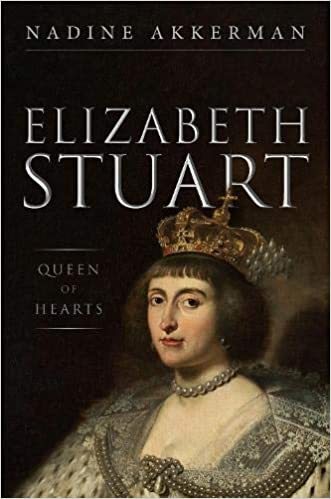
Elizabeth Stuart, Queen of Hearts
Hardcover – 25 November 2021 (UK) & 9 April 2022 (US)
Elizabeth Stuart is one the most misrepresented – and underestimated – figures of the seventeenth century. Labelled a spendthrift more interested in the theatre and her pet monkeys than politics or her children, and long pitied as ‘The Winter Queen’, the direct ancestor of Elizabeth II was widely misunderstood. Nadine Akkerman’s biography reveals an altogether different woman, painting a vivid picture of a queen forged in the white heat of European conflict.

House of Tudor: A Grisly History
Hardcover – 28 February 2022 (UK) & 30 April 2022 (US)
Gruesome but not gratuitous, this decidedly darker take on the Tudors, from 1485 to 1603, covers some forty-five ‘events’ from the Tudor reign, taking in everything from the death of Richard III to the botched execution of Mary Queen of Scots and a whole host of horrors in between. Particular attention is paid to the various gruesome ways in which the Tudors despatched their various villains and lawbreakers, from simple beheadings to burnings and, of course, the dreaded hanging, drawing and quartering. Other chapters cover the various diseases prevalent during Tudor times, including the dreaded ‘Sweating Sickness’ – rather topical at the moment, unfortunately – as well as the cures for these sicknesses, some of which were considered worse than the actual disease itself. The day-to-day living conditions of the general populace are also examined, as well as various social taboos and the punishments that accompanied them, i.e. the stocks, as well as punishment by exile. Tudor England was not a nice place to live by 21st century standards, but the book will also serve to explain how it was still nevertheless a familiar home to our ancestors.

Women in the Medieval Court: Consorts and Concubines
Hardcover – 28 February 2022 (UK) & 30 April 2022 (US)
While the courts of medieval Europe ate up tales of knights in shining armour and damsels in distress, the reality for the elite women who inhabited those courts could be very different. Medieval society might expect the noblewomen who decorated its courts to play the role of Queen Guinevere, but many of these women had very different ideas. In a society dominated by men, women who stood out from the crowd could experience great success -and greater failure. Great queens, who sometimes ruled in their own right, fought wars and forged empires. Noblewomen acted behind the scenes to change the course of politics. Far from cloistered off from the world, powerful abbesses played the role of kingmaker. And concubines had a role to play as well, both as political actors and as mothers of children who might change a country’s destiny. They experienced tremendous success and dramatic downfalls. Meet women from across medieval Europe, from a Danish queen who waged political war to form a Scandinavian empire to a Tuscan countess who joined her troops on the battlefield. Whether they wielded power in battle, from a convent or throne room, or even in the bedchamber, these women were far from damsels in distress.
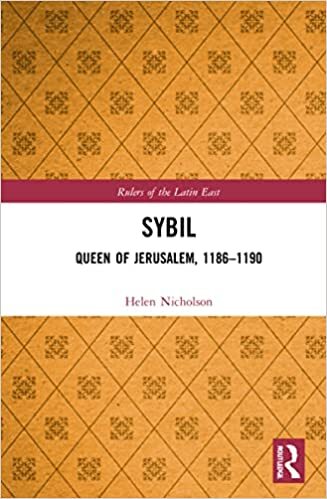
Sybil: Queen of Jerusalem, 1186–1190 (Rulers of the Latin East)
Hardcover – 15 December 2021 (US) & 13 April 2022 (UK)
Queen Sybil of Jerusalem, Queen in her own right, was ruler of the kingdom of Jerusalem from 1186 to 1190. Her reign saw the loss of the city of Jerusalem to Saladin and the beginning of the Third Crusade. Her reign began with her nobles divided and crisis looming; by her death, the military forces of Christian Europe were uniting with her and her husband, intent on recovering what had been lost. Sybil died before the bulk of the forces of the Third Crusade could arrive in the kingdom, and Jerusalem was never recovered. But although Sybil failed, she went down fighting – spiritually, even if not physically.

In Search of a Kingdom: Francis Drake, Elizabeth I, and the Perilous Birth of the British Empire
Paperback – 29 March 2022 (US) & 28 April 2022 (UK)
In 1580, sailing on Elizabeth’s covert orders, Drake became the first captain to circumnavigate the earth successfully. (Ferdinand Magellan had died in his attempt.) Part exploring expedition, part raiding mission, Drake’s audacious around-the-world journey in the Golden Hind reached Patagonia, the Pacific Coast of present-day California and Oregon, the Spice Islands, Java, and Africa. Almost a decade later, Elizabeth called upon Drake again. As the devil-may-care vice-admiral of the English fleet, Drake dramatically defeated the once-invincible Spanish Armada, spurring the British Empire’s ascent and permanently wounding its greatest rival.
The relationship between Drake and Elizabeth is the missing link in our understanding of the rise of the British Empire, and its importance has not been fully described or appreciated. Framed around Drake’s key voyages as a window into this crucial moment in British history, In Search of a Kingdom is a rousing adventure narrative entwining epic historical themes with intimate passions.
Cleopatra: The Queen Who Challenged Rome and Conquered Eternity
Paperback – 15 March 2022 (US) & 28 April 2022 (UK)
Cleopatra focuses on a twenty-year period that marked a sweeping change in Roman history, beginning with the assassination of Julius Caesar that led to the end of the Republic and ending with the suicides of Antony and Cleopatra and the birth of the Augustan Empire. Angela brings the people, stories, customs, and traditions of this fascinating period alive as he transports us to the chaotic streets of the capital of the ancient world, the exotic port of Alexandria in Egypt, and to the bloody battlefields where an empire was won and lost.
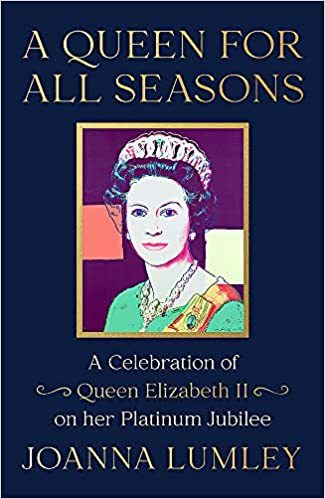
A Queen for All Seasons: A Celebration of Queen Elizabeth II on her Platinum Jubilee
Hardcover – 28 October 2021 (UK) & 19 April 2022 (US)
A Queen For All Seasons, edited and introduced by Joanna Lumley, is a perceptive, touching and engaging tribute to this unique woman. A treasure chest of first-hand writings, insights and snapshots of the Queen during key moments of her reign to form a vibrant portrait of the woman herself and the extraordinary role she plays.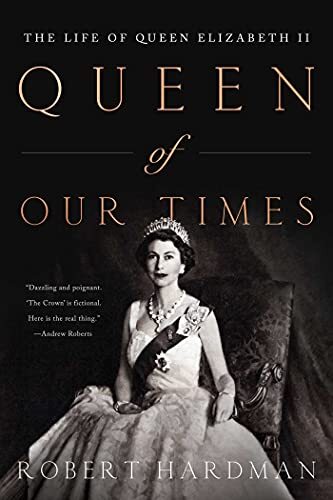
Queen of Our Times: The Life of Queen Elizabeth II
Library Binding – 27 April 2022 (US & UK)
A definitive portrait of Queen Elizabeth II on the seventieth anniversary of her reign by a renowned royal biographer.

The Queen: 70 years of Majestic Style
Hardcover – 19 April 2022 (US & UK)
A woman whose views are never heard, Queen Elizabeth II has deployed fashion as a means to communicate and signal her position to the crowds who gather to see her in public and the millions who watch her television broadcasts: “I must be seen to be believed,” she has said. The Queen’s evolving attitude to dress reflects a visual landscape that began as genteel reportage in mostly black and white and has over the years evolved into today’s technicolour 24/7 news cycle, flashed around the globe in seconds and driven by social media. Incredibly, in her 70th year as monarch, the Queen feels as relevant as ever before–and she is, undoubtedly, a style icon. The Queen: 70 Years of Majestic Style celebrates the fashion evolution of Elizabeth II in her unprecedented Platinum Jubilee year.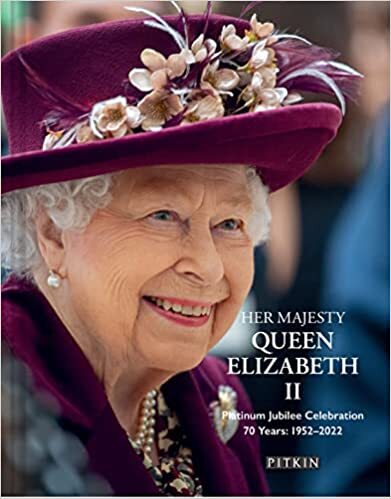
Her Majesty Queen Elizabeth II: Platinum Jubilee Celebration: 70 Years: 1952-2022
Hardcover – 5 April 2022 (US) & 1 February 2022 (UK)
This book celebrates the highlights and challenges of HM Queen Elizabeth II’s reign over the past seven decades.

Scandals of the Royal Palaces: An Intimate Memoir of Royals Behaving Badly
Hardcover – 5 April 2022 (US) & 19 October 2021 (UK)
This book is the first in-depth look at the outrageous behaviour not just of the royals themselves but also of palace officials, courtiers, household servants and hangers-on. Covering existing royal palaces in some depth as well taking a look at scandals linked to long-vanished royal residences, such as Whitehall, Nonsuch and Kings Langley, Scandals of the Royal Palaces also includes new information on well-known and not-so-well-known scandals, including those that have only recently been revealed in detail through the release of previously secret official papers.
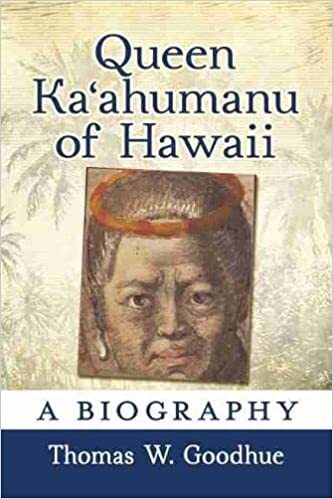
Queen Kaʻahumanu of Hawaii: A Biography
Paperback – 5 April 2022 (US) & 14 April 2022 (UK)
King Kamehameha the Great had 30 wives, but Ka’ahumanu (c.1768-1832) was his favourite. Descended from Oceanian voyagers, she grew up in a society completely isolated from the rest of the world, her life enmeshed in dynastic wars and constrained by an elaborate system of taboos. In 1778, she was shocked by the arrival of alien ships, followed by an influx of foreigners. In their wake came devastating epidemics. Seizing power after the King’s death, Ka’ahumanu overturned those taboos and guided her nation through revolutionary change, crucial to the Hawaiian Islands’ unification. Through sicknesses, romances, infidelities, murders, rebellions, pardons, travels, missionary work, and more, her story challenges things many believe about American history, Christianity, and gender; further, it has implications for our current debates about immigration, sexuality, and religious diversity. Drawing on seldom-analysed French and Russian sources, this biography covers previously-neglected aspects of Ka’ahumanu’s life. The many spouses and lovers she and Kamehameha had, the roles played by Central Europeans, African-Americans, Catholics and Unitarians in her realm, and struggles with religious pluralism are all included.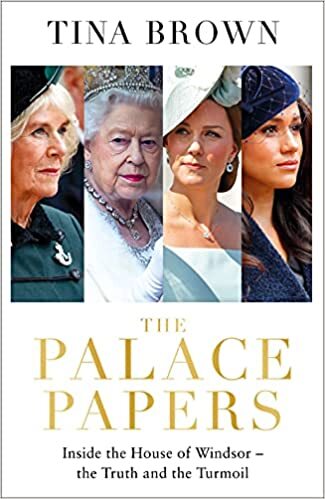
The Palace Papers: Inside the House of Windsor–the Truth and the Turmoil
Hardcover – 26 April 2022 (US)
Picking up where Tina Brown’s masterful The Diana Chronicles left off, The Palace Papers reveals how the royal family reinvented itself after the traumatic years when Diana’s blazing celebrity ripped through the House of Windsor like a comet.

Anne of Bohemia (Lives of Royal Women)
Paperback – 18 April 2022 (US & UK)
This volume examines the life of Anne of Bohemia, first queen of Richard II (1377-1399), and situates her within the context of medieval queenship by arguing that Anne ably fulfilled the political role of the queen consort through her intercession, patronage, and piety.
Much previous scholarship on Anne has focused on her relationship with famous poets, such as Geoffrey Chaucer, but from analysing government documents, it becomes clear that Anne used her wealth and status to enact power. Through financial, religious, and cultural patronage, Anne rewarded supporters and servants and influenced court life. The examination of sources such as a letter from Anne to her half brother and an apothecary bill that contains some fertility medicines suggests that the Queen both desired and tried to have children. As such, the volume questions the public imagination of Anne and shows that, in this example, although she died childless, Anne and Richard attempted to have children throughout their marriage.
With the inclusion of tables listing Anne’s acts of intercession and her land holdings and land grants, Anne of Bohemia is a useful tool for students and scholars interested in queenship studies, medieval women’s history, and the history of the English monarchy.
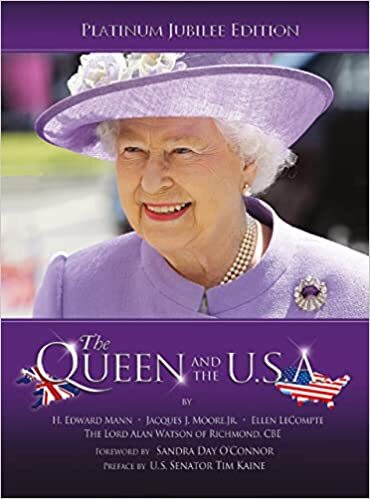
The Queen and the U.S.A.
Hardcover – 1 April 2022 (UK & US)
During 2022, Queen Elizabeth II will celebrate the 70th anniversary of her role as Queen of England. The American and British people have shared a special relationship between our two countries. This book intends to celebrate our relationship and honour Queen Elizabeth II for her role and contributions to a friendship recognised throughout the world. This release is a revised 2nd printing of The Queen and the U.S.A. released in 2012 to honour her Diamond Jubilee Celebration.
The post Book News April 2022 appeared first on History of Royal Women.
The Year of Empress Elisabeth – Mary Vetsera: The “pure angel” who accompanied Rudolf into the other world (Part one)
Baroness Mary Vetsera was born on 19 March 1871 as the daughter of Albin Freiherr (Baron) von Vetsera and Helene Baltazzi. Her parents’ marriage was not a love match but rather one that was advantageous for both – Helene was rich, and Albin had a title. Albin was also 22 years older than Helene. Mary was the third of four children. She had an older brother named Ladislaus, an older sister named Johanna (Hanna) and a younger brother named Franz.
Mary was raised in a family environment that promoted marrying into families of importance. She was educated at the Institute for Daughters of the Nobility, but Mary had little interest in schooling. Helene often threw parties and tried to find her way into the Austrian court to find a suitable husband for Mary.1 Helene had once been the lover of Crown Prince Rudolf of Austria, and she also knew his cousin Countess Marie Larisch von Moennich well. Marie had an ongoing affair with Helene’s brother Heinrich and two of her children: Marie Henriette (born 1884) and Heinrich Georg (born 1886) were likely fathered by him rather than her husband. It was Marie who would facilitate the relationship between Mary and Crown Prince Rudolf that was to come. It was only after the tragedy had happened that Marie claimed that Mary had sought out Rudolf on her own and that the relationship had surprised her.
It all began in the spring of 1888. Marie would collect the 17-year-old Mary from her mother’s residence every few days, ostentatiously to take her shopping or to the Prater, but they always ended up with Rudolf. It was hardly a secret, and even Rudolf’s wife Stéphanie knew of it after she had followed her husband to the Prater one night. She angrily declared that Mary “ought to be packed off to school or somewhere where she’d be taught to respect the holy commandments!”2
By the autumn, the affair was spiralling out of control with Mary so profoundly infatuated with Rudolf that she visited him in just a nightgown with a fur coat over it. Marie was beginning to lose control over the situation. Mary told Marie, “That stupid Crown Princess knows that I am her rival!”3 She also delighted in mocking Stéphanie, and she began to believe that Rudolf would have his marriage annulled and that he would marry her instead. Never mind the fact that he still regularly saw other women as well. He told Marie that Mary was “just a woman who loves me. I’ve known many far more beautiful, but I have never met with one more faithful.”4
On 5 November 1888, Marie collected Mary to go shopping and to have their pictures taken, “for him, of course.”5 Afterwards, they were spirited into Rudolf’s apartments in the Hofburg. Mary later wrote, “If we could live together in a hut, we would be happy. We always talk about how happy it would make us. But unfortunately, it is not to be. If I could give my life for him, I would gladly do so, for what does my life mean to me? We have made a pact toward this possibility.”6 Rudolf gave her a simple iron ring with the inscription ILVBIDT (translated as United by love until death).
As the relationship continued, Mary and Rudolf became less discrete. Even Marie found it distasteful and told her, “I think you display very questionable taste in flaunting yourself.”7 On 21 December 1888, the two lovers met for the last time that year at the Hofburg. Soon, the affair would turn tragic indeed.
Rudolf’s fascination with death had been brewing for quite a while by then. He suffered from the painful symptoms of gonorrhoea, which he attempted to lessen with alcohol and drugs. He told Marie, “Altogether, I’m in a bad way. I’m tired of life.”8 He began to erratically speak of suicide to anyone who would listen, but he wasn’t taken seriously. Then he began asking members of his staff to join him in a suicide pact, and many of his staff asked to be reassigned. He even threatened Stéphanie, telling her he was going to shoot her and then himself. He then went to his other mistress, Mitzi Caspar, who didn’t think it was very funny at all and reported his request to the police. Nothing was done.
On 13 January 1889, Mary and Rudolf were reunited at the Hofburg. Mary returned home in despair and told her maid, “Oh, it would have been so much better had I not gone to see him today! Now I no longer belong to myself alone but exist only for him. From now on, I must do everything he asks.”9 She later wrote, “We both lost our heads. Now we belong to one another body and soul.”10 They met again on 19 January and 24 January. By then, her mother had been panicking at home over the affair. She would later claim not to have known about it until then. The two argued, and Mary fled to the Grand Hotel where Marie was staying. She cried, “Oh, Marie darling, do get me away from Vienna! I shall die if I have to remain at home!”11 Marie managed to calm Mary down and returned her home, where Mary promptly fainted and had to be put to bed.
Part two coming soon.
The post The Year of Empress Elisabeth – Mary Vetsera: The “pure angel” who accompanied Rudolf into the other world (Part one) appeared first on History of Royal Women.




